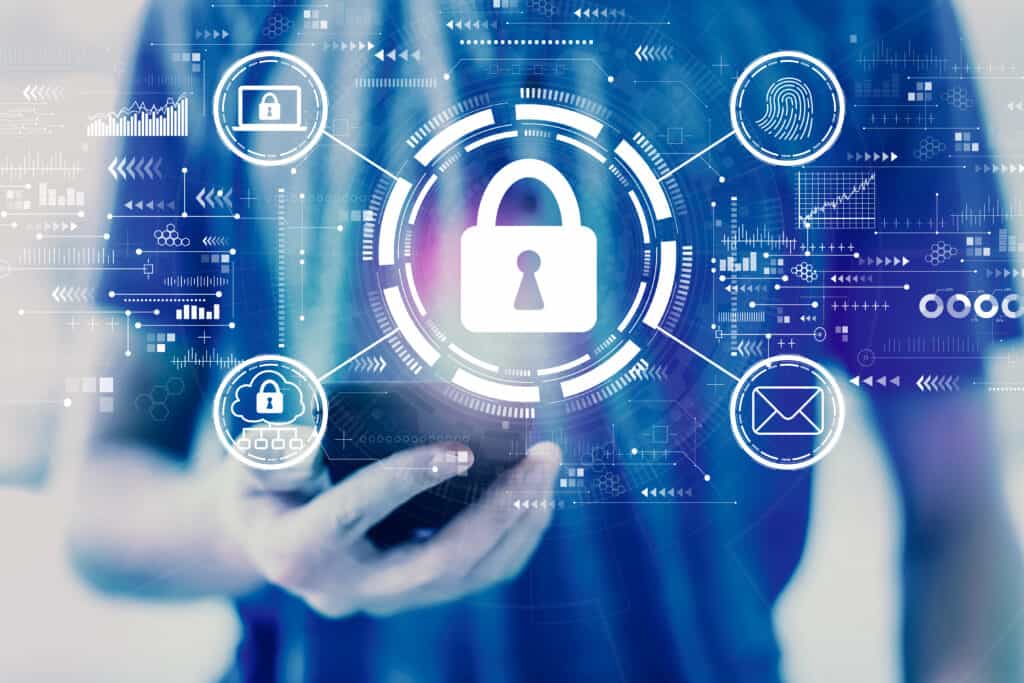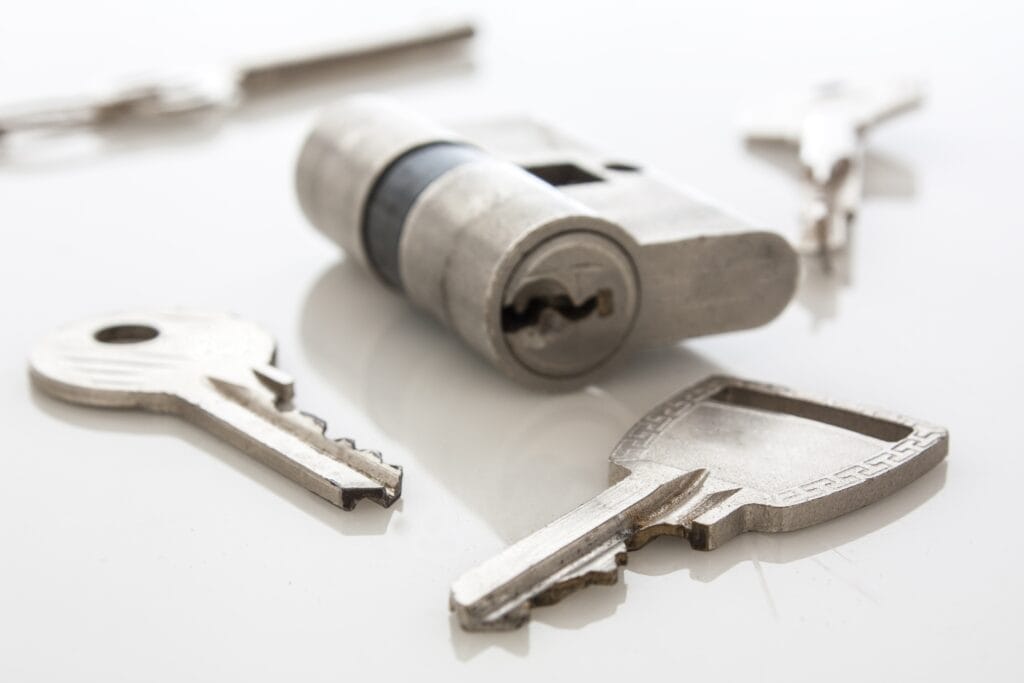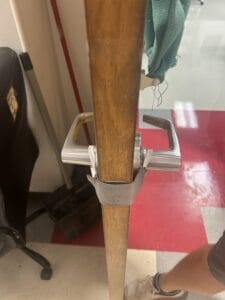Safety and security play a vital role in our daily lives, and one key aspect of safeguarding our belongings and personal space is the use of locks. Understanding how locks function not only teaches us about their practical applications but also illustrates the mechanics behind this centuries-old technology. In this article, we’ll explore the different types of locks in use today and the basic principles that govern their operation.
At the core of any lock’s functionality is the concept of selective access, meaning that only authorized individuals can operate the lock using the correct key or combination. There are various lock designs, from traditional pin tumbler and lever locks to more advanced electronic and biometric locks. Each design has its own set of features to ensure the security of whatever it’s protecting, whether it be a door, a safe, or other valuables.
Several factors contribute to a lock’s effectiveness, including its design, physical durability, and resistance to forced entry or tampering. Balancing these characteristics with accessibility for the user is an important aspect of lock engineering and design.
Understanding Locks
Types of Locks
There are various types of locks available in the market, each offering different levels of security and functionality. Some common types of locks include padlocks, deadbolts, knob locks, and combination locks. Padlocks are portable and come in various sizes, while deadbolts provide enhanced security for doors. Knob locks are often used for interior doors of homes, while combination locks require a specific sequence of numbers or symbols to open.
Components of Locks
A typical lock consists of several components working together to provide safety and security. Key components of locks include the cylinder, bolt, ring, keys, plug, and pins. The cylinder is the part of the lock where the key is inserted, and it contains the plug and pins. The bolt is the part of the lock that extends into the door frame to keep the door locked. The ring, also known as the escutcheon, is the decorative plate around the keyhole or the lock body.
How Does a Lock Work
The basic mechanism of a lock involves the interaction between the key, plug, and pins. When the correct key is inserted into the lock, it aligns the pins within the plug, allowing the plug to rotate and the bolt to retract or extend. This either locks or unlocks the door.
There are also locks that use master keys, which allow access to multiple locks with a single key. This is achieved by incorporating additional pins within the lock. Combination locks work differently by requiring the user to enter a predetermined sequence of numbers or symbols, either through dials or electronic keypads, to unlock the lock without the need for a physical key.
By understanding the types, components, and functioning of various locks, one can make informed decisions when selecting the appropriate lock for their needs.
The Role of Locks in Security
Locks play a crucial role in ensuring the safety and security of various establishments, including residential, commercial, educational, and religious institutions. They provide access control, helping to prevent unauthorized entry and safeguard valuable assets. Let’s explore the different types of locks and their importance in these specific settings.
Residential Locks
Residential security is essential for homeowners to protect their property and loved ones. Various lock types are available for homes, such as traditional deadbolts, electronic locks, and smart lock systems. Entry door security often includes both a deadbolt and a door handle lock. Additionally, window security measures, such as locks on sliding windows or bars to prevent forced entry, contribute to a comprehensive home security approach.
Home security may also incorporate alarm systems, surveillance cameras, and smart home technology to further ensure the safety of occupants. Some security tips include regularly checking the locks’ functionality, keeping doors and windows locked, and updating security systems as needed.
Commercial Locks
Commercial security aims at safeguarding office buildings, retail stores, and industrial facilities. Access control systems, such as keyless entry and electronic access, regulate entry to sensitive areas like server rooms or office doors. Commercial door locks vary in complexity and can range from traditional deadbolts to high-security electronic locks.
Business security solutions also involve security policies and regular assessments of potential threats. Commercial security trends include employing advanced security measures, like biometric identification and multi-factor authentication, to further enhance protection.
Educational Institutions
Educational institutions, such as schools, colleges, and universities, require robust security measures to ensure the safety of students, staff, and campus infrastructure. Classroom locks, campus access control systems, and lockdown procedures are some of the security features in place.
School security systems can involve surveillance cameras, alarms, and secure entry points to prevent unauthorized access. Access control for schools can help monitor the entry and exit of students and staff, as well as efficiently manage emergency situations.
Religious Institutions
Religious institutions like churches, mosques, and temples must also implement security measures to protect their congregation, events, and more. Religious facility access control systems can help regulate entry to various parts of the building.
Security for places of worship may involve a combination of physical and electronic access controls, surveillance cameras, and alarm systems. Safeguarding religious artifacts and implementing security during religious events are crucial aspects of faith-based security measures.
The proper use of locks and access control systems significantly contributes to the security of residential, commercial, educational, and religious institutions. Regular assessment and updates to these measures help ensure a safe and secure environment for all.
Lock Functions
Passage Lock Function
Passage locks are used for interior doors where locking is not essential. They are often found on closet doors, hallways, and common areas. These locks feature non-locking door hardware, allowing easy access through the door without the need for a key or code. Door passage sets are available in a variety of designs and finishes to match the style of the interior door hardware.
Privacy Lock Function
Privacy locks are designed for residential spaces where privacy is required, such as bedrooms and bathrooms. Unlike passage locks, privacy door locks are equipped with a locking mechanism, typically activated by a thumb turn or push button on the inside. The lock can be easily opened from the outside using a small tool in case of emergencies. Bathroom privacy locks are popular choices for this function.
Storeroom Lock Function
Storeroom locks are used on doors where secure storage solutions are needed. They are common in commercial settings, providing access control for storage areas. The storeroom door locks always remain locked and require a key for entry while automatically locking when the door closes. Storeroom lock installation is crucial to prevent unauthorized access to valuable or sensitive items.
Classroom Lock Function
Classroom locks are purpose-built for schools and educational settings. They are designed to ensure classroom safety by allowing occupants to lock the door securely from the inside during potential threats. These locks require a key for entry from the outside, effectively preventing unauthorized access. Additionally, they are engineered to withstand frequent use without compromising the classroom’s security.
Classroom Security Lock Function
Classroom security locks offer advanced lockdown solutions tailored for educational institutions. While they share similarities with standard classroom locks, they incorporate extra security features to thwart unauthorized access during emergencies.
These locks can be seamlessly integrated with access control systems, enabling precise control over who can enter or exit. This integration helps ensure that school lockdown procedures can be efficiently enforced, enhancing overall security.
Office Lock Function
Office locks are designed for professional spaces where access control is essential. Commercial office locks offer security solutions for businesses to protect confidential information and valuable assets. Office door security may include key-operated locks, key card systems, or biometric access systems, depending on the level of access control needed.
Deadbolt Lock Function
Deadbolts are a popular choice for residential and commercial buildings, providing high-security deadbolt locks that cannot be easily picked or bypassed. They function differently from latch bolts, as they require manual operation with a key or thumb turn. Deadbolt installation is an essential step in improving the security of a property, and various designs are available to match the aesthetics of the building’s exterior.
Electronic Lock Function
Electronic locksets offer a modern approach to access control, utilizing smart technology and electrified features. Electric door locksets can be controlled via remote, mobile app, or access codes, providing convenience while maintaining security. Commercial electrified locksets are popular in offices and institutions, while residential smart locks include options such as keyless entry and remote locking capabilities.
Importance of Key Control
Key control plays a crucial role in maintaining safety and security in various settings. Managing the distribution and access to keys ensures that only authorized individuals can gain entrance to specific areas. Proper key control can prevent unauthorized entry and protect valuable assets.
One critical aspect of key control is the use of master keys. A master key is designed to open multiple locks, offering a flexible and efficient security solution for businesses, institutions, and large properties. By securing access to various areas, master keys provide a higher level of safety by reducing the number of keys in circulation. Managers and security personnel must maintain accurate records of who has access to master keys, as losing control over them can result in a breach of security.
Key cylinders also contribute to the effectiveness of key control. These components are responsible for the functioning of the lock, and determining the specific key needed to unlock the door. High-quality key cylinders can prevent unauthorized access through techniques like lock bumping and picking. By investing in advanced key cylinder technology, one can greatly enhance their overall security.
Implementing strict policies for the distribution and tracking of keys is essential in maintaining a secure environment. This might include regular audits of key usage, updating access rights, and ensuring the safe return of keys when employees leave the company. Using software solutions that track key distribution and usage can be helpful in staying organized and improving the efficiency of the key management process.
Key control is a vital part of a comprehensive approach to safety and security. Implementing robust measures, such as master key systems, high-quality key cylinders, and strict access policies, enhances the overall protection and safety of any facility.
Convenience and Advances in Lock Technology

With the rapid development of technology, locks have evolved significantly to provide more convenience and security to users. One of the most notable advances in lock technology is the emergence of electronic locks and smart locks, which have revolutionized the way we secure our homes, offices, and other possessions.
Electronic locks function by using keypads, key cards, or biometric systems to authenticate users. These types of locks offer an increased level of security by eliminating the need for physical keys, which can be easily duplicated or lost. Additionally, electronic locks can be easily reprogrammed, providing the ability to change access codes as needed.
Smart locks, on the other hand, take electronic locks a step further by incorporating smartphone connectivity and home automation systems. This enables users to lock and unlock doors remotely, receive notifications when someone enters or leaves, and even grant temporary access to guests or service providers. Smart locks provide an unprecedented level of convenience and control to homeowners, allowing them to manage access to their property more efficiently.
The integration of lock technology with other home security systems has also increased the overall safety of properties. For instance, security cameras can be linked with smart lock systems to provide live video feeds when someone attempts to unlock the door, alerting the homeowner to potential security threats.
These advances in lock technology have had a positive impact on both residential and commercial applications. In commercial settings, electronic and smart locks can be used in conjunction with access control systems to restrict entry to specific zones or areas, ensuring only authorized personnel have access.
The development of electronic and smart locks has significantly improved the way we safeguard our belongings. By leveraging advanced technologies, modern locks offer greater convenience, control, and security, revolutionizing the locking industry and providing peace of mind to users.
Safety Measures and Precautions
Ensuring safety and peace of mind begins with understanding the different types of locks and their functions. By taking the right precautions, one can significantly reduce the risk of intruders, thieves, and break-ins.
One helpful tip for homeowners is to install high-quality deadbolt locks on exterior doors. These locks offer stronger security compared to traditional spring-latch locks. A deadbolt’s bolt cannot be dislodged without using the correct key, making it more resistant to forced entry.
It is essential to keep doors and windows in good condition, as damaged frames or glass can make it easier for burglars to gain entry. Regularly check for signs of wear and tear and replace or repair any weak spots immediately. Additionally, reinforce sliding doors and windows with additional security bars or locks to further deter burglars.
Lighting plays a crucial role in enhancing the security of a property. By illuminating dark areas around the home, potential intruders may be discouraged from attempting a break-in. Motion-activated lights can be particularly effective in deterring thieves, as they create the impression that someone is watching.
A security system can provide an extra layer of protection. This can include alarms, security cameras, and monitoring services, all working together to help prevent burglaries and alert the homeowner and authorities in the event of a break-in. Some security systems even offer remote access capabilities, allowing users to keep an eye on their property from anywhere.
Finally, it’s essential to be mindful of key management. Avoid hiding spare keys outside the home, as thieves often know the most common hiding places. Instead, consider leaving a spare key with a trusted neighbor or invest in a smart lock that allows keyless entry with a unique code.
By employing these safety measures and precautions, homeowners can significantly increase the security of their property and enjoy peace of mind knowing they have taken the necessary steps to protect their homes and belongings.
Maintenance and Expertise
Regular maintenance is essential to ensure the longevity and effectiveness of locks. It is important to clean and lubricate the internal components periodically, as dirt and debris can accumulate over time, causing the lock to malfunction. Maintaining a lock typically involves using a specialized lubricant, such as graphite or silicone, which helps to ensure smooth operation and prevents rust from forming on the internal components.
Expertise plays a crucial role in the safety and security provided by locks. An experienced and skilled locksmith can identify potential issues and recommend the appropriate solutions to address them. They can also provide valuable advice on enhancing the overall security of a property, such as upgrading existing locks or installing additional security measures like deadbolts, strike plates, or high-security cylinders.
Statistical Overview and Legal Aspects
Locks play a crucial role in ensuring safety and security across various sectors, from residential properties to high-security facilities. According to a recent study, the global market for smart locks alone is expected to reach $4 billion by 2026, driven primarily by rising security concerns and advancements in lock technology.
A significant factor in the steady growth of the locks market is the increasing demand for more expensive high-security locks. These advanced locking systems employ state-of-the-art technology, such as biometrics and electronic access control, providing unparalleled levels of protection. As crime rates continue to rise in certain regions, the need for robust security measures is becoming increasingly apparent, and law enforcement agencies often recommend upgrading locks to enhance security.
In addition to the monetary aspects, regulations surrounding locks and security systems also play a significant role. In many countries, specific standards and requirements must be met for locks to be legally compliant.
The legal implications of lock usage extend to liabilities related to unauthorized access. Property owners who have not adequately secured their premises may find themselves bearing legal responsibility in the event of intrusion or theft. Consequently, incorporating high-quality locks in security systems is not only beneficial for safety but can also help mitigate the risk of potential legal disputes.
Property owners and businesses must remain informed about relevant legal requirements in order to comply with regulations, protect their assets, and reduce the risk of liability. The relationship between statistical data, legal aspects, and lock functionality underscores the importance of understanding and implementing modern security measures.
Frequently Asked Questions
How do different lockset types ensure safety and security?
There are various lockset types that provide varying levels of security, such as deadbolts, padlocks, and lever handle locks. These locks function differently, but all are designed to deter unauthorized access. For example, deadbolts offer a high level of security since they can only be opened with a key or keypad code. On the other hand, padlocks are more portable and versatile, suitable for both indoor and outdoor use.
What is the role of ANSI lock functions in security?
ANSI lock functions categorize locks according to their specific use and application. This classification system, developed by the American National Standards Institute (ANSI), helps consumers and professionals choose the appropriate lock to meet their safety and security needs. Understanding the ANSI classifications will assist in the selection of the correct lock to maximize security and minimize risk.
How do storeroom and classroom locks compare?
Storeroom and classroom locks function differently to offer distinct levels of security. Storeroom locks require a key for entry and remain locked at all times when the door is closed. This ensures that only authorized individuals can access the storeroom. In contrast, classroom locks can be locked or unlocked from the outside using a key, but can be unlocked from the inside without a key. This design prioritizes student safety, allowing occupants to exit the room quickly during emergencies without needing a key.
What are the main features of entrance lock function?
Entrance lock functions typically combine security with accessibility. They can be locked or unlocked from the outside using a key, and can be locked or unlocked from the inside using a thumb turn or push button. An additional feature of entrance lock functions is their latch bolt, which retracts when the door handle is turned, providing a smooth and convenient means of entry.
How does passage function lockset work?
Passage function locksets are designed for interior doors where locking is not necessary. They allow free entry and exit without requiring a key or other method of unlocking. The latch bolt in a passage function lockset retracts when the door handle is turned, permitting passage without restriction.
Why is understanding door hardware functions important for security?
Selecting the appropriate door hardware functions plays a crucial role in ensuring security. By understanding the purpose and functionality of each lock type and function, one can make informed decisions when selecting and installing door hardware. Properly installed and functioning locks make it more difficult for burglars to gain unauthorized access, ultimately enhancing overall safety and security.








